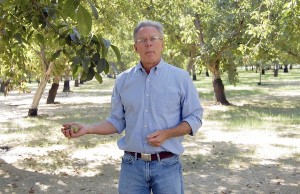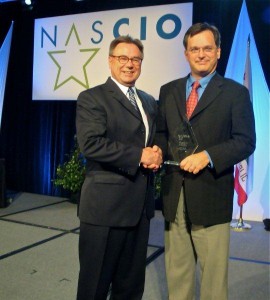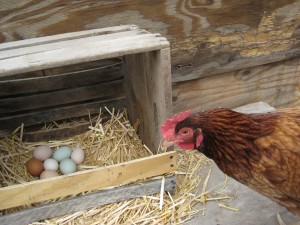 http://www.latimes.com/business/la-fi-1028-himi-craig-mcnamara-20121028,0,1752156.story
http://www.latimes.com/business/la-fi-1028-himi-craig-mcnamara-20121028,0,1752156.story
The gig: Craig McNamara is a sustainable farming expert, organic walnut farmer in the Sacramento Valley town of Winters, founder of the nonprofit Center for Land-Based Learning and the California Farm Academy, and president of the state Board of Food and Agriculture, which advises state officials on farming policies.
Organic food basket: At his Sierra Orchards, Craig McNamara makes extensive use of pro-environment and conservation techniques as he grows 450 acres of organic walnuts, presses organic olive oil from 150 trees that are more than a century old and helps his son raise hops for a local craft beer. The Center for Land-Based Learning and the California Farm Academy are based at his farm, on the bank of Putah Creek near the Solano-Yolo county line.
Techniques: “We try to incorporate sustainability into all our actions,” said McNamara, so that the farm supports “healthy people, a healthy planet and a healthy profit.” He relies on solar power to run water pumps, sediment traps to reduce fertilizer runoff into streams and the underground aquifer, “green” composting that doesn’t depend on animal manure and pollination with native bees.
Honors: His environmental work earned him the 2012 James Irvine Foundation Leadership Award, the 2007 Leopold Conservation Award and other honors. He has served on the state Board of Food and Agriculture since 2002. Last year, Gov. Jerry Brown appointed him board president.
Politics and the farm: McNamara has managed to find a balance among making a living as a farmer, teaching about the importance of farming and, as a high-level appointee, helping bring experience and expertise to public policy on water, labor, exports and other issues in the country’s richest agricultural state.
Roots and upbringing: He grew up in Ann Arbor, Mich., and Washington, D.C., in the shadow of his late father, former U.S. Secretary of Defense Robert McNamara, considered the architect of the Vietnam War. In high school, Craig McNamara broke with his father over the war. His mother, Margaret, was a literacy pioneer who started the Reading Is Fundamental program.
Latin America travels: McNamara’s interest in agriculture developed after he dropped out of Stanford University and traveled around Latin America for two years. On his way to Tierra del Fuego at the southernmost tip of South America, he worked on peasant farms and came to understand “the importance of sustainable agriculture and how political food is.”
Back to the land: McNamara came to the Sacramento Valley, where he fell in love with the flat, fertile soil and the farms, ranches and orchards. He received a degree in plant and soil science from UC Davis in 1976 and struggled for three years to run a 60-acre garden that supplied fresh produce to San Francisco restaurants. “It broke me financially and it broke me physically,” he said. He switched to walnuts, he said, because they are high value, harvested once a year, healthful and not highly perishable.
Nuclear family: McNamara has been married for 30 years to his wife, Julie, an entomologist he met at UC Davis. They have two sons — Graham, 28, who works for a software company in San Francisco, and Sean, 25, who returned to the farm 18 months ago to grow hops. A daughter, Emily, 20, is a student at Brown University.
Young farmers: The California Farm Academy just graduated its first class of 20 young farmers from its six-month program. The center and academy are busy places thanks to a growing interest among young people in organic farming, farmers markets and the slow-food movement, he said. “It’s a perfect wave, a wholesome wave,” McNamara said. “Millennials understand the importance of agriculture and food and this vital connection to nature.” California must attract more young farmers, he said, or risk losing valuable agricultural land from production.
Agricultural gold: As an educator, McNamara hopes that training will instill among students the same devotion to the land that the pioneers of the Sacramento Valley showed when they settled there after the Gold Rush. “People then were so dedicated, so courageous and so adaptable,” he said. “The same character exists today.”










